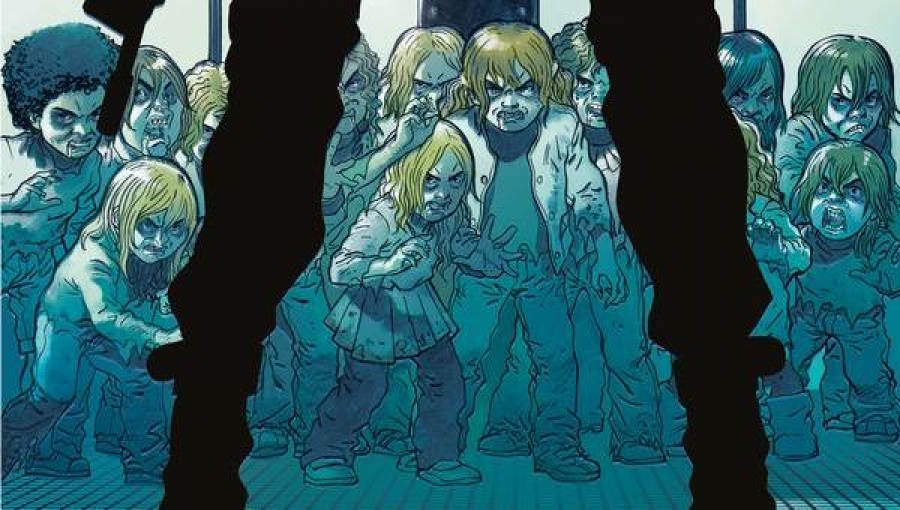As I read The Rage, I kept thinking about the iconic scene from the first episode of The Walking Dead TV series where Rick Grimes comes across a young girl ambling through a parking lot. Rick is initially concerned with helping her, but soon realizes that there is something very, very wrong. He barely reacts in time with the necessary force as she moves to attack him. The scene highlights just how truly horrifying this new world is going to be for Rick and the rest of the survivors.
There is a natural inclination to deny horror when it’s presented in a form so firmly associated with innocence . . . a form we are expected to nurture and protect. The creators of The Rage put us right into the middle of this problem, creating a world where plague has turned all of the children into rage-filled killing machines in the vein of 28 Days Later (which are not technically zombies, but we can agree to move on from that technicality).
The central conflict is the question of what to do with these children. Infected children are cured by the onset of hormonal changes at puberty. Valiant efforts have been made to quarantine and control these children, but there are serious issues to contend with. Can they be contained? How is it best to recover them as they near the point of being cured? Are these efforts worth the risks that they pose?
We are introduced to Amina Riviere, a nurse and mother of three children who has faced a tremendous amount of tragedy before the story even begins. We quickly discover that Amina is on a quest to find out what has happened to one of her sons who has been infected and taken away by the authorities. A nurse, she volunteers to serve on a team assigned to retrieve children on the brink of being cured.
Amina gets the bulk of the character development to be found in The Rage. She is steadfast and determined, clearly willing to do anything that might be necessary to find her son. She is surrounded by a team of secondary characters, all of whom seem to have the same degree of vaguely suspicious intentions. A number of the relationships, however, are so briefly introduced that it’s difficult to understand exactly what they’re meant to be or what history underlies them.
Additionally, I had one significant issue with plot logic. When Amina joins the retrieval team, she is thrown into action that involves helicopters and guns, among other technical equipment, with absolutely no training. The plot excuse that is given is that the government agency in charge cannot afford to train new members. There is neither the resources nor the time. I found this to be truly inexplicable. I can’t imagine anyone would agree to step into any situation with untrained team members carrying guns . . . and certainly not volunteer to lead such a group.
I thought the artwork depicted its setting very well, communicating the sense of location without resorting to overused iconic locations. Facial expressions and individual character representations were less successful. There was some inconsistency in facial features for characters from frame to frame, as well as a bit of a confusing uniformity to the minor male characters. My overall impression was that the art served the story adequately, neither greatly detracting from or really adding to it significantly.
Overall, I’m intrigued by The Rage’s premise, but don’t think I’m sufficiently hooked into either the characters or the conflict. Among the opposing factions to we’re introduced to, we only briefly encounter serious dangers, outside of encountering a horde of infected children. I would have liked to have seen some kind of significant threat to Amina’s quest. This will, I hope, be something developed as the story progresses.
In the meantime, I’m going to be grateful that my kid is nice and calm.

